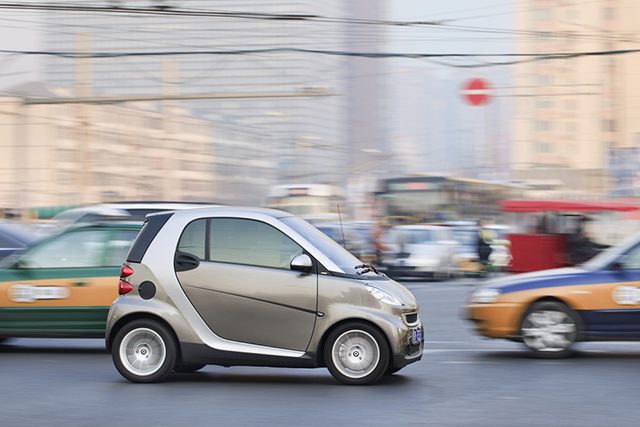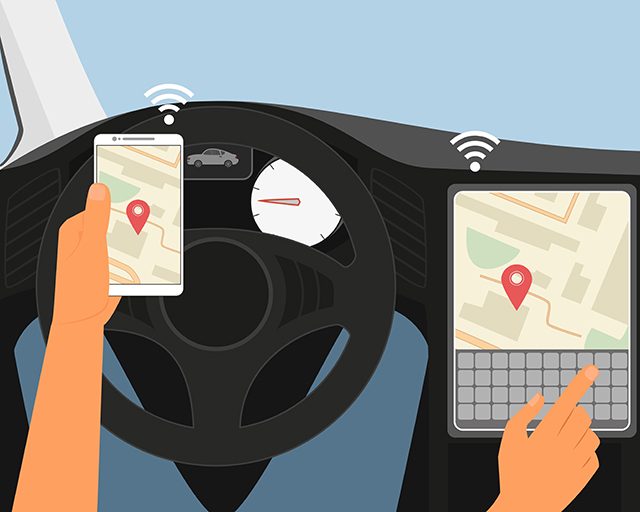SUMMARY
This is AI generated summarization, which may have errors. For context, always refer to the full article.

In the past few years, we have seen the rise of small, fuel-efficient cars – an innovation on the part of car manufacturers.
But automotive technology has been constantly innovating to update transportation into new realms.
Cars in the last 5 years have also become connected to a large variety of devices, equipped to do more than a normal car.
Compact designs
Design trends in 2015 are pushing toward lighter, more compact cars.
An example is the redesign of Ford’s F-150 pickup as most vehicles in this line will now be manufactured with aluminum cabs and bodies.
Sports utility vehicles (SUVs) have also become more compact, prompting the “subcompact” category of SUVs like the 2015 Jeep Renegade and Chevrolet Trax.
The subcompact SUVs are generally priced lower and are more fuel efficient than their bigger cousins.
Connectivity

The step up in technology is also another design trend in newer models.
Most cars come equipped with more than the standard GPS system: General Motors and Audi, in particular, are pushing for 4G LTE connectivity in some of their 2015 models.
This innovation is being considered by other manufacturers to allow for on-the-go fixes to software and almost instant traffic updates.
Hybrid cars –which allow for the use of both fuel and electric systems – are to see an expansion into luxury and high-performance lines as seen in the Lexus and Mercedes models.
High-tech safety features
A large push in 2015 also includes more modern security features for the car, with some high- to mid-range models installed with video cameras and radar sensors. These features signal warnings against course collision and lane departure.
Research on these features is pushing toward an autonomous or driverless car by the end of the decade. Google has been the most aggressive in research and development of these functions.
Some models, like the 2015 Honda CR-V and the 2015 Ford F-150, also include lane-keeping assist and radar cruise control.
Data tracking technology
Naturally, with technological advances in vehicles, it is also important that insurance and safety move forward with the trend.
Among these is data tracking technology, which helps policyholders lower costs on their premiums by tracking the performance of their vehicle.
One of those popular in data tracking technologies is Snapshot, developed in the United States in late-2010. The tool itself is about the size of a small thumb drive that goes in the diagnostic port of a car, which then sends data to the company via cellular network. The data itself is used by the insurer to determine how much more or less your premiums may be.
Locally, the data tracking dongle is available through Remora, a tracking system that uses satellite technology to monitor a vehicle’s location.
Auto insurance adapting to trends
As future cars are modernized for safety, mobility, and comfort, changes in auto insurance policies are also expected to lower auto insurance rates.
The rise of various safety tech, like automatic braking, telemetrics, vehicle-to-vehicle communications, and autonomous cars are reshaping the industry as a whole, possibly reducing premiums.
In the Philippines, however, car insurance providers have yet to set their rates based on these developments.
Insurance companies are foreseeing changes in risk shifting, as these technologies would move the risk factor from driver error to vehicle malfunction, and thereby put the liability on the manufacturer instead of the owner.
Another possible change is risk reduction.
Research into autonomous, driverless cars may eventually yield a change to the way risks are assessed by insurance companies. Driverless cars are already visible in the US, and are fully legal to run in California.
Overall, keeping up with technology is one of the things shaping the auto insurance trade.
In the near future, we would see insurers equip their adjustors with tablets and other devices synced to their network to allow for mobility, faster claims processing, and more personalized service for Filipino motorists. – Rappler.com
MoneyMax.ph is an online platform for comparing financial and telecom products and services. It aims to give the power of smart purchase decisions back to Filipino consumers by providing everything they need to become financially savvy.
Smart, compact car image and smart car and smartphone image via Shutterstock
Add a comment
How does this make you feel?
There are no comments yet. Add your comment to start the conversation.